 Sunday/Weekend
Sunday/Weekend

By Lê Việt Dũng
Within the elevated mountain-surrounded basin of Duy Xuyên District in the south-central province of Quảng Nam lies a site that was once the centre for spirituality and worship of the Champa Kingdom and a burial place for its royal and national heroes for centuries.
Mỹ Sơn Sanctuary, so be its name, encompasses a series of red-brick temples and sandstone shrines adorned with bas-reliefs of Hinduism divinities and their epic battles against the devils. All were brought to life through the skilled hands of ancient Champa artisans.
"When it comes to building things with bricks, Champa people have a special skill that no one else in Southeast Asia can beat," said a local tour guide when he unravelled layers of history hidden in the ancient ruins.
And he didn't exaggerate at all. The most recently built temple in the sanctuary boasts an age of at least eight centuries yet stands well against the test of time.
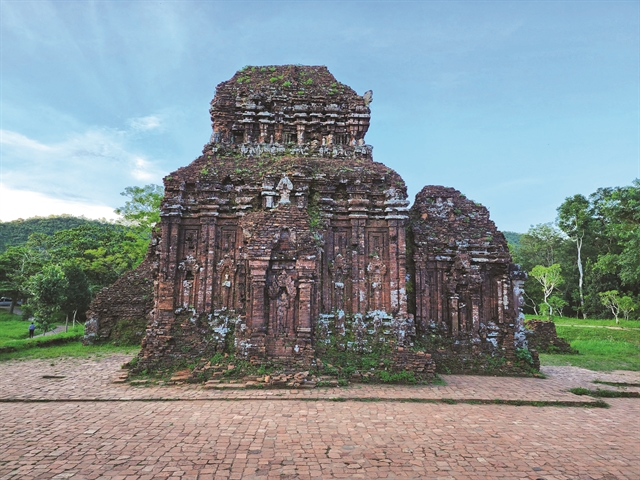 |
| Temple C1, believed to be the earliest-built temple on the site. It was rebuilt in the 10th and 11th centuries to be dedicated to the human statue of the god Shiva. — VNS Photo Lê Việt Dũng |
Stepping inside, visitors would be immediately struck by the resemblance its rock-cut pillars bear to those of Rome. The architectural similarity was a reflection of how Roman aesthetics were carried through India and found their way to Southeast Asia.
In close proximity to the temple is a series of steles engraved with ancient Champa inscriptions, which traced its origin to Sanskrit - a sacred form of writing reserved exclusively for academics and rituals.
Centuries of atmospheric erosion have worn down the less resistant surface of the steles but not enough to turn their carvings into illegibility.
Yet the inscriptions remain largely unintelligible for current scholars as their writing system has vanished along with the social class that used it, the Champa priests.
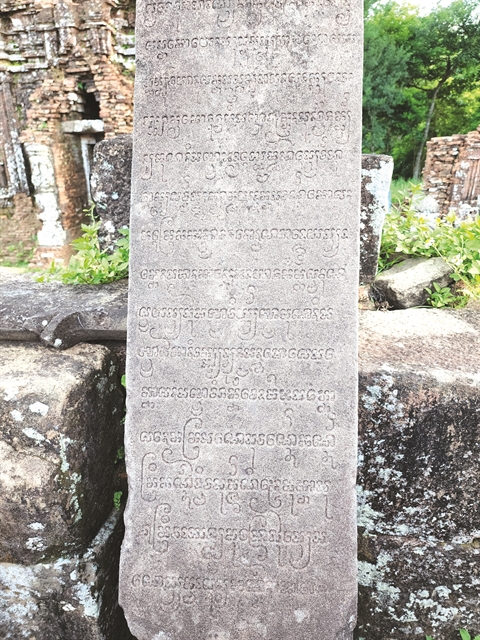 |
| A stele engraved with ancient Champa inscriptions that remain legible after eight centuries. — VNS Photo Lê Việt Dũng |
Not far to the east of the steles is a solemn hall that was dedicated to offering preparation but has now been revamped as a place for the exhibition of cultural heritage.
What truly captivates visitors' eyes within this transformed haven is a stone bas-relief depicting the divine deity Shiva performing the vigorous cosmic dance of creation, preservation, and destruction, or tandava in Sanskrit.
Though the bas-relief was badly damaged by bombings during the Vietnam War, its artistic value remains intact and bears witness to the extraordinary carving skills of ancient Champa artisans.
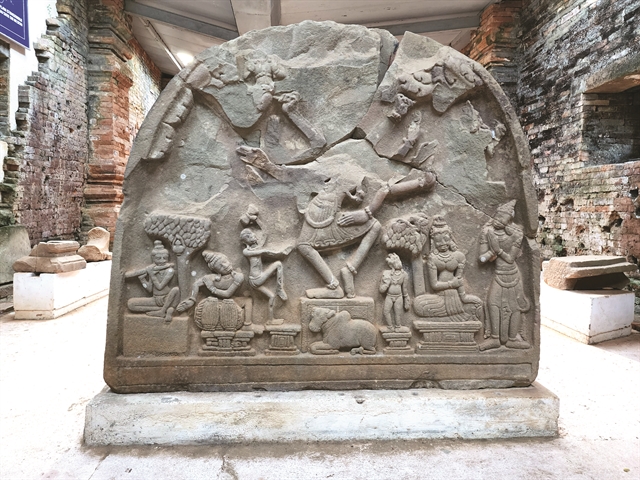 |
| The war-torn bas-relief depicting Shiva performing 'tandava', a dance that triggers the cosmic cycle of creation, preservation and dissolution. — VNS Photo Lê Việt Dũng |
A bas-relief of similar size but in better condition could be found in another exhibition room adjacent to the first, depicting Shiva dancing on the back of the mythical sea creature Makara. In Hinduism mythology, Makara always strongly opposes Shiva, but the act of "standing on its back" reflects the deity's ability to subdue the crocodile-like monster.
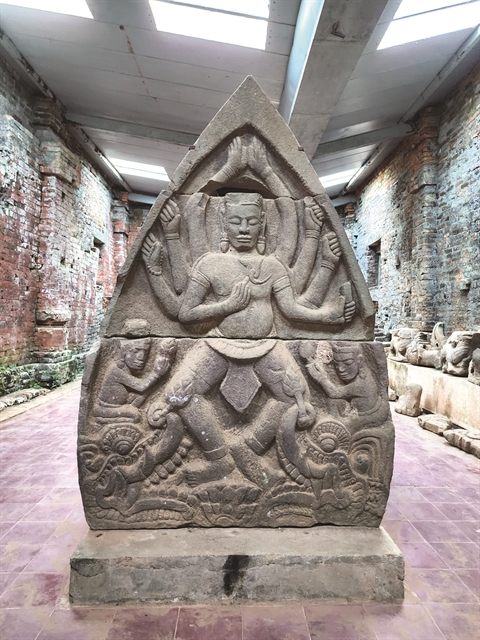 |
| Another bas-relief depicting dancing Shiva on the back of the sea-serpent Makara. — VNS Photo Lê Việt Dũng |
Scattered throughout the hall are many other ancient relics of archaeological significance. Although few were left untouched by wartime destruction, they continue to beckon visitors to delve into the Champa narrative that spans centuries.
 |
| A stone statue of a Champa noblewoman with its upper part badly damaged by war. VNS Photo Lê Việt Dũng |
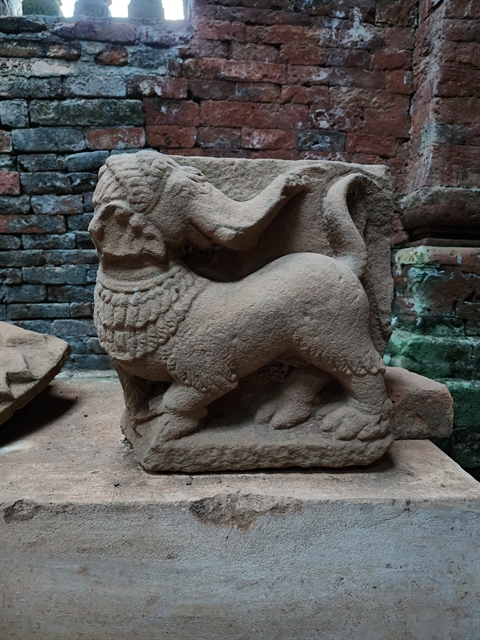 |
| Bas-relief depicting Gajasimha, a mythical hybrid animal appearing as a lion with the head or trunk of an elephant. — VNS Photo Lê Việt Dũng |
Borbala Banya, a visitor from Hungary, has dreamed for nearly six years to visit Việt Nam, and Mỹ Sơn Sanctuary is one of her favourite sites for its unique architecture that is far different from that of the ancient Hungarian kingdom.
"I have a teacher who is an anthropologist and has lived in an ethnic minority community in Việt Nam for one and a half years. He really inspired me to dig deeper and now I have a really colourful view of the country," said the visitor.
The limitations of physical travel have propelled the historical destination to take a leap into the metaverse to offer visitors a virtual experience of its rich past. With a smartphone, users worldwide can traverse its intricately carved temples from the comfort of their own homes while an AI bot provides them with the historical context, architectural insights, and the cultural significance of each structure.
 |
| A 3D view of Mỹ Sơn Sanctuary in the metaverse world Bizverse. VNS Photo Lê Việt Dũng |
Today, efforts to preserve and restore the heritage site continue, ensuring that its stories endure for generations yet to come. — VNS




